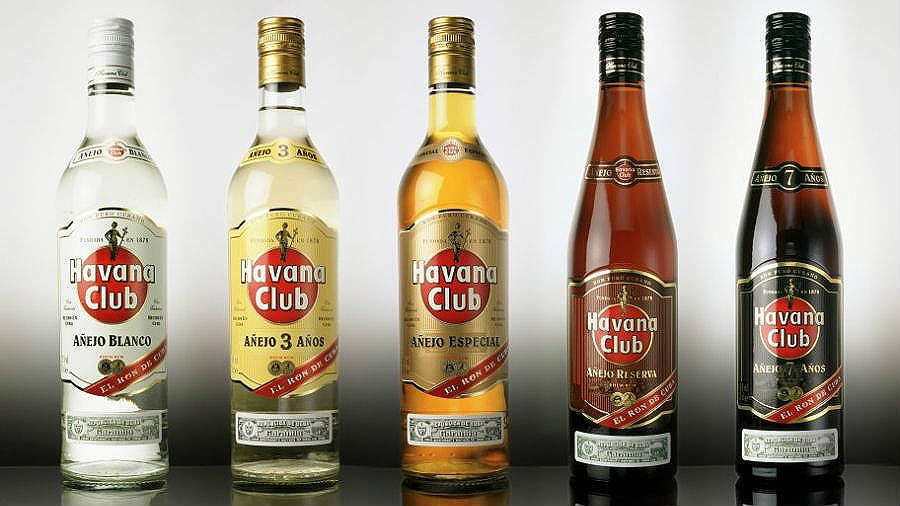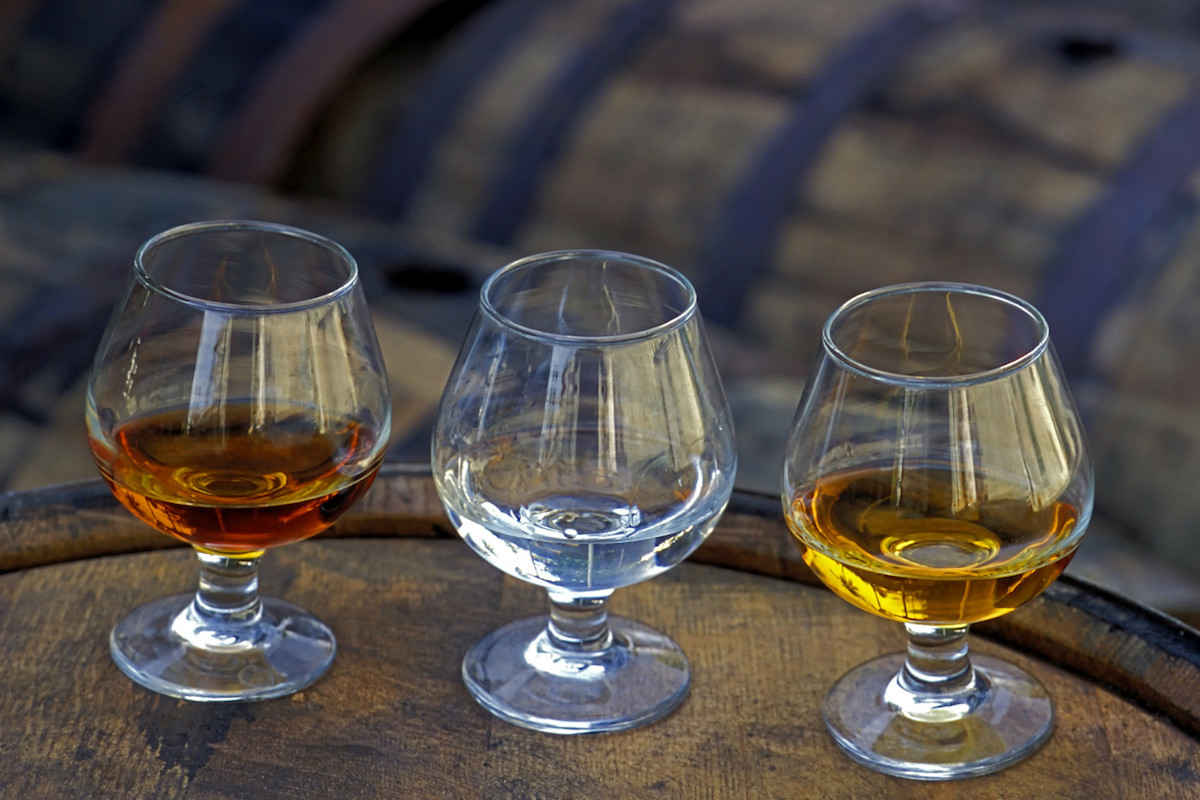A friend recently asked: “Why do companies spend time and money to age their rum, only to filter out the color and presumably some of the flavor?”
It’s a great question, one that even knowledgeable spirits consumers rarely pause to consider. Also, doesn’t filtering a rum until it’s clear effectively turn it into a neutral spirit with relatively little taste? Further complicating the question, some rums are filtered midway through their aging process before returning to the cask. So what exactly is going on here?
Before jumping into why, let’s first address the notion of white rums.
What Exactly Is White Rum?
It’s a misconception that “white” rum never sees the inside of a barrel. Some clear white rums are aged, while others aren’t. Freshly distilled spirit of any kind has no color, and you’ll often see unaged white rums offered by smaller craft distilleries. Overproof rums like Jamaica’s Wray & Nephew Overproof also experience no aging. And, of course, unaged rhum agricole from the French Caribbean is often held up as high art.
Now contrast these unaged whites with rums like Bacardi Carta Blanca, Don Q Cristal, Havana Club Anejo Blanco, and Caña Brava 3 Year. All are crystal clear yet have spent at least a year and often longer in a cask prior to filtration and bottling. The keen eye will notice these are all brands with a Spanish heritage—Cuba, Puerto Rico, and Panama. Carbon filtering is a technique closely associated with Spanish heritage producers; in fact, some claim it was Facundo Bacardi who first applied filtration to rum in the mid-1800s. However, distilleries in the former Spanish colonies aren’t the only ones using filtration today. El Dorado 3 and Doorly’s 3 are also carbon-filtered white rums, yet both are from English heritage locales—Guyana and Barbados, respectively.
Now let’s turn to the crux of the question at hand: Why filter a rum until it’s clear? Every brand cited above also sells aged rum with lots of color. (The darker the rum, the longer it’s been aged, right? Well, not necessarily.) So producers filter some of their rums and not others. On the surface, it’s a strange practice considering that aging and color are prized characteristics among consumers.
Cuban Rum Regulations to the Rescue

To answer the “why filter” question, let’s turn to an authoritative source—the Cuban rum regulations. Known as the Denominación de Origen Protegida (in English, “Protected Designation of Origin”), these are the rules that Cuban rum makers must follow, but they also offer insights into the essential characteristics of Cuban rum. Although the document is in Spanish, I’ve translated it into English here. A bit of science is involved in what follows, but I promise to simplify.
From section 21.6.4:
“In Cuba it is required to age all pure spirits for a period of at least two years in white oak barrels of 180-200 liters of capacity, generally of Irish or Scottish origin, which have already aged a spirit [i.e. whisky].
The high alcoholic strength of the aguardiente and the ethanol congeners, coupled with the fact that at this stage, younger barrels are used, means a high formation of acids, esters, aldehydes and high wood compound extraction (e.g., volatile phenols, furan aldehydes, phenolic aldehydes and other very important ones such as oak lactone) occurs after two years. Likewise, the extraction of tannins with high amounts of harsh and bitter polyphenols is also significant.
Since everything extracted from the cask is not necessarily pleasant, and what is nice at one intensity can be unpleasant at another, the Cuban rum process uses an active carbon absorption operation to eliminate the unpleasant aromas and to diminish the concentration of others…”
That’s a lot to process. Here are the essential bits:
- In Cuba, new make cane spirit is known as aguardiente, rather than rum.
- Aging aguardiente in younger casks creates taste compounds, e.g. esters, aldehydes, and oak lactones (e.g. coconut flavors).
- However, aging also introduces unpleasant flavors, such as harsh tannins.
- Targeted carbon filtration allows unpleasant flavors to be diminished while retaining desired flavors.
- Cask aging and then filtration is what turns aguardiente into rum.
In a nutshell, Spanish heritage traditions focus on initial aging in younger oak casks to create desirable flavors, followed by filtration to remove unwanted flavors that came along for the ride.
Interestingly, Cuban regulations don’t count time in a cask prior to filtration as part of the stated age. Thus, a rum like Havana Club 3 spends at least two years aging in a cask prior to filtration, plus at least three years following filtration. This aging/filtering/aging process is a hallmark of Cuban rum.
What about Bacardi, the world’s largest rum producer? They also stress their Cuban roots and carbon filter their rums after aging. Their white rums (Superior, Maestro, and Neo) are all aged and carbon filtered. Bacardi Superior is aged at least a year before filtering and bottling. Maestro is said to be double aged, starting out like Superior, but the casks are then married and aged for three more months before filtering and bottling. Neo, the most expensive, is a blend of rums aged up to eight years before filtering—and that extra time in a barrel certainly is noticeable.
So, Why Filter Rum?
While filtration ideally only removes unwanted flavors, the reality is that some desirable flavors and some color is also lost. However, a lighter, filtered rum isn’t necessarily a bad thing. The pantheon of classic cocktails includes many drinks such as the Mojito and the classic Daiquiri that work best with lighter, more delicate rums rather than strongly flavored rums from places like Jamaica and Guyana.
Carbon-filtered white rums are a matter of cultural heritage as well as a stylistic choice. Filtration is a useful tool allowing producers to get the benefits of aging while being able to fine tune flavor profiles in a dimension beyond time in a cask.
Recently, a friend and I sat down with a gamut of filtered white rums, tasting and comparing them methodically. We found large differences in flavor profiles and intensities, and some were downright enjoyable to drink neat. The key lesson: Don’t dismiss all white rums as the same. And don’t automatically assume they’re of lesser value than their “aged” counterparts. Do your homework and check out some premium white rums. You’ll probably be surprised what you find!




I seek rum that has stuff in it. (like unfined/unfiltered wines!)
Unfiltered, uncolored, no caramel-nor glycerin.. you know, the stuff that makes the lesser rum taste greater. thievery!